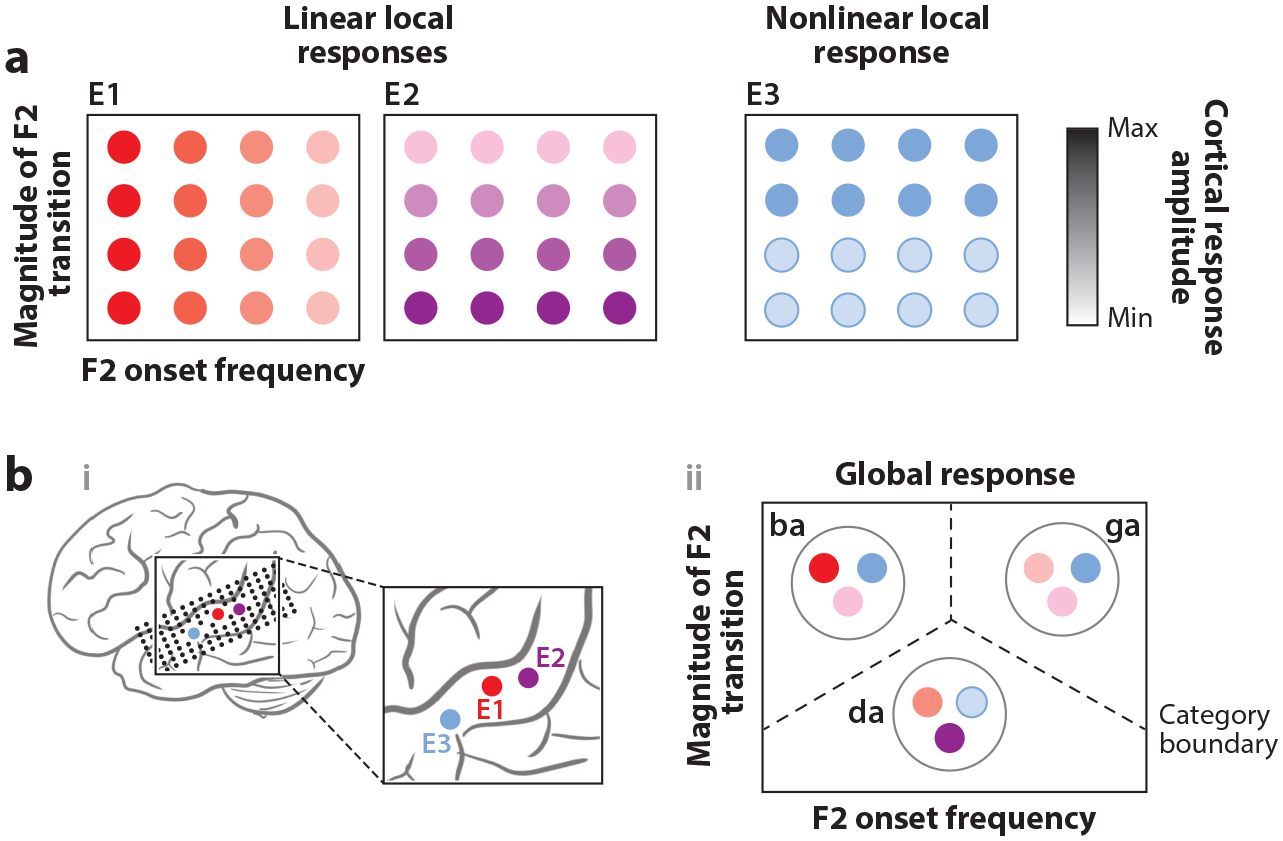Figure 3.

Patterns of activity across the STG allow for the categorization of phonological units. (a) Single electrodes (selected electrodes are shown as colored circles labeled E1, E2, and E3) respond to incremental acoustic change, showing graded linear (E1 and E2) or abrupt nonlinear (E3) monotonic tuning to certain spectral features (e.g., F2 onset frequency or magnitude of F2 transition). Single electrode responses do not prefer a phonemic category but are tuned more generally to auditory cues such as the example acoustic-phonetic features shown in this panel. (b) Schematic depiction of the categorical neural encoding of speech sounds, derived from patterns of activity across the population. Information distributed across the electrodes (selected electrodes illustrated in subpanel i) can be used to determine the phonemic category of presented speech sounds (e.g., /ba/, /da/, /ga/) (subpanel ii) and reflects the perceptual experience of the listener. Further, overlapping functionality in the neural code (blue and purple circles in the rightmost diagram) may be important for retaining within-category sensitivities. Abbreviations: F2, second spectral peak; STG, superior temporal gyrus.
